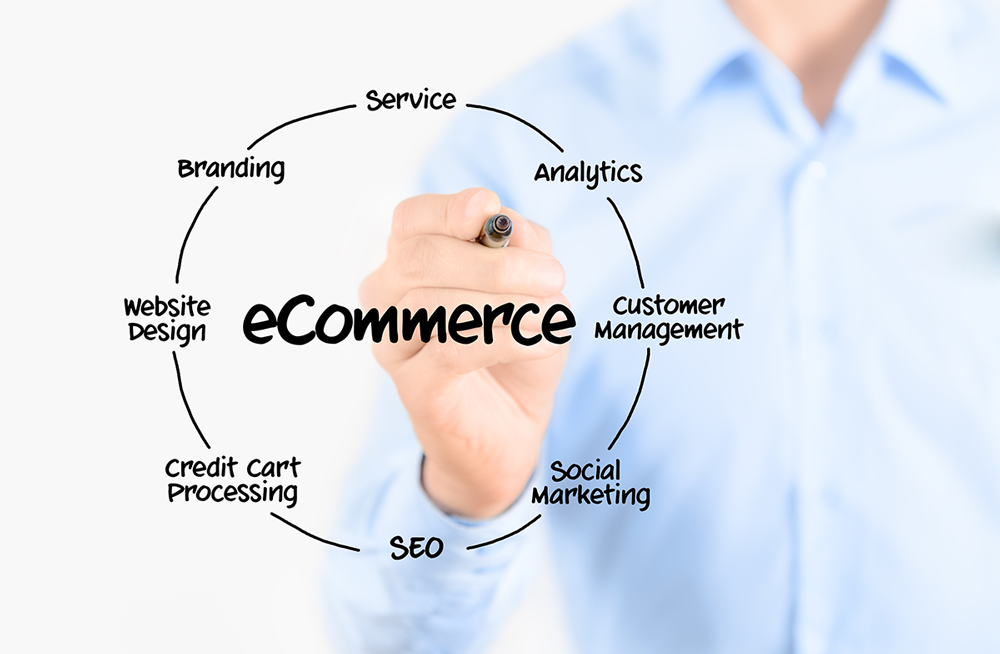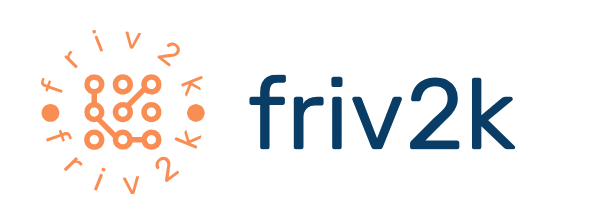For e-commerce to work, you need to create a platform (store), attract people to it, nurture leads, process their orders. And then provide the necessary technical support, process payments. And the last, deliver the goods and keep the entire system in working order. Let’s take a closer look at each of these processes.

Process 1: Presentation of goods on the E-commerce
First, you need to find the optimal platform for presenting goods and services. For example, a marketplace can be:
- your own company website or landing page;
- a page on Facebook, Instagram and other social networks;
- an online store on Amazon, eBay, Etsy, AliExpress.
The choice of platform depends on the size of the company and the niche. For example, it is easier for a small business to start with social networks. Because they provide the necessary functionality for promoting goods among users of a given social network. And if you have established the production of several goods. You can create your own store on Amazon. It is worth creating your own website if you are going to sell a lot of products. Such as clothes and shoes, for easy sorting, presentation of promotions, discounts, etc.
If you want to promote several products or a training course. Create a landing page in web ecommerce development. The service provides a convenient designer for a mobile landing page, an e-commerce, and multi-links for Instagram. You don’t need to know the code for this. Instead, using the visual designer, you add the necessary elements to the layout of your future landing page and edit them to your taste. If you don’t want to create a landing page from scratch, use ready-made templates. Besides, the service is absolutely free.
Below you can see the process of creating a landing page in ecommerce website in UAE. We have chosen a ready-made template, to which you can add elements from the left panel and edit their design using the right panel.
Process 2: Attracting traffic to the E-commerce
You should choose a lead generation strategy depending on the trading platform you have chosen. Here’s how to attract future customers to different platforms:
- Website, landing page, blog. Optimize your website, landing page, and blog to get to the top of Google search results. Promote your website using the Google Ads advertising platform. Place subscription forms on the website to convert search and advertising traffic into email and chatbot subscribers.
- Instagram and Facebook profile. Not only create quality content, hold giveaways, interact with influencers, but also use Facebook Business functionality to promote your brand on social networks.
- Promotion on online trading platforms. Follow the rules, requirements, and recommendations of the platforms on which you place your business. This will allow you to get into author’s selections as soon as possible and “shine” to more buyers.
Process 3: Lead nurturing
However, not every lead is ready to buy right away. Here’s what you need to do to warm up your leads’ interest and move them to the next step of the buyer’s journey:
- Share useful and educational content on social media, blogs, and email newsletters, organically weave your products and services into it;
- Spur the desire to buy with promotions, discounts, and sales;
- Work with objections, that is, explain why your product is worth buying, why it is better than others, provide positive reviews from other customers.
Process 4: E-commerce Order processing
When customers are ready to buy in an online store, they add the desired products to the cart and proceed to checkout. In social networks, they simply write private messages to first find out the details. It is important to provide all the necessary information as quickly as possible before the person’s interest cools down.
Process 5: E-commerce Payment processing
It is necessary to make this process fast and clear so that users only need to enter the delivery address and card information. Set up integration with several popular payment systems in your country. For example, PayPal, Visa, GooglePay, Yandex Money, WebMoney, etc. Remember that some systems may not work in other countries.
Process 6: Delivery and return of goods
Now the goods must be delivered to the consumer within the promised time frame. However, use the postal services Nova Poshta, UkrPoshta, Russian Post, FedEx, Royal Mail, USPS and others. If the goods do not fit, you need to organize a refund, following the return rules and legislation of your country.
Process 7: E-commerce Maintenance of all previous points
Maintain the availability of goods in the warehouse and transfer real data to the e-commerce. Improve the quality of content, attract new leads and nurture existing ones. Process complaints to improve the checkout process and increase the overall reputation of the brand through positive reviews. In fact, with ecommerce website design dubai you can just relax.
Keep these processes in mind when we look at e-commerce examples.

